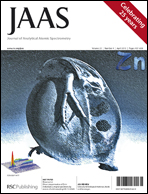A spectroscopic investigation of the afterglow and recombination process in a microsecond pulsed glow discharge
Abstract
The emission characteristics of afterglow in a microsecond pulsed glow discharge atomic source are studied to obtain insight into the excitation and recombination processes of


 Please wait while we load your content...
Please wait while we load your content...